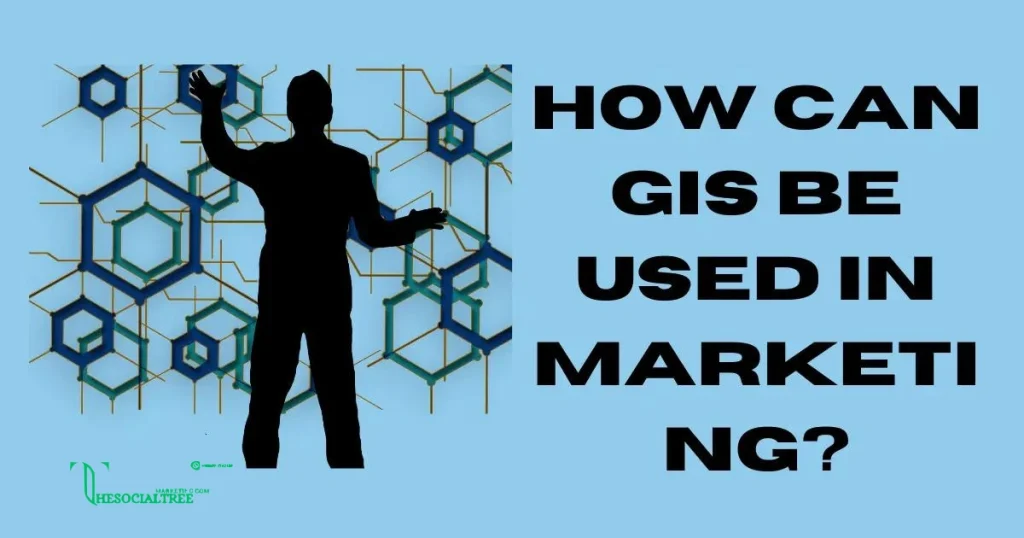Table of Contents
ToggleHow Can GIS be Used in Marketing?
Have you ever seen how some businesses always look to know exactly where to put their ads or where to open new stores? It is not magic—it is GIS. Additionally, it stands for Geographic Information System. It is like a sharp map that helps businesses make wise choices. Let us discuss further how GIS is helpful in marketing in a way that is easy to understand.
Modern GIS did not set out until the 1990s, with the development of computer technology and the internet for better data management, processing, and sharing.
However, the logic and process are still the same as ten years prior.
Do you have a business and want to get the appropriate audience in the right spot? GIS marketing might be your secret weapon. It is about using location data to make your marketing more accurate and personal.
Here is the deal: location data can seriously build your business.
For example, 48% of marketers say it has improved their returns and engagement. And 37% found it helps them serve content that hits their audience.
Let’s break down how GIS can make your marketing efforts awesome!
How Does GIS Help in Marketing?
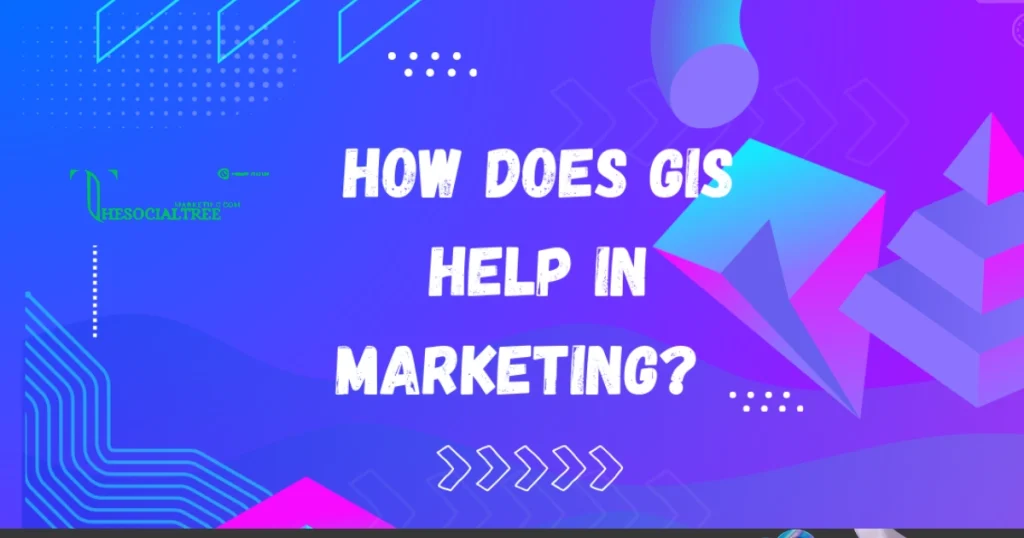
GIS in marketing helps you to manage customer relationships, understand risks, and know about market segments. It is also great for understanding what your competitors are up to. It makes your marketing way more focused and effective.
Why Is Knowing Customer Location a Big Deal?
Customer location is essential because it helps you target the right places. You can send them promotions and ads specific to their area when you know where your customers are.
Furthermore, you can also segment your customers into different groups based on where they live, which helps you understand what they need and want. Plus, it is great for understanding where to distribute your stuff and saving on shipping costs.
How to Add Marketing Data to GIS?
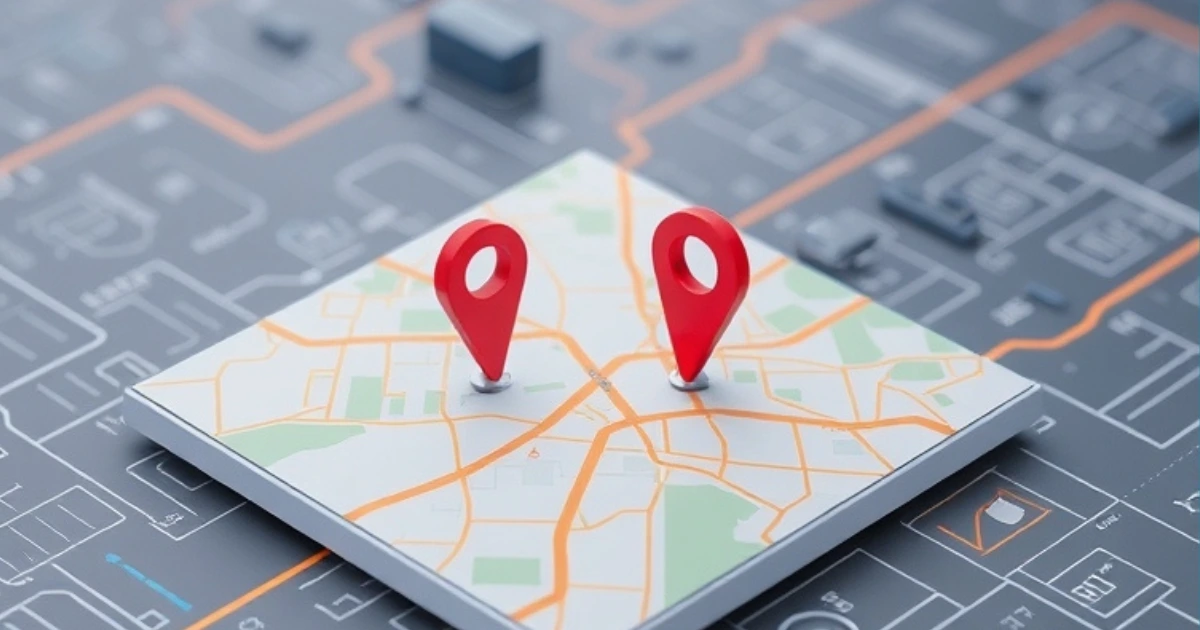
Want to get started with GIS for your marketing? Here is a simple guide:
Alright, let us make this more easy:
Sure thing, let us dig in and keep it chill:
Gather Your Data
First of all, work with all your marketing info. Think customer details, sales numbers, and anything else that is necessary. Just get all the pieces of the puzzle in one place.
Choose a GIS Tool
Secondly, choose a GIS tool that is suitable for you. There are manners, so pick one that they can fit and afford. It is like selecting the right tool to find the one that gets it done for a job.
Prepare the Data
Thirdly, ensure your data is good before playing with your GIS tool. It means checking that everything is in the appropriate format and ready to be used. You do not want any surprises or errors later on.
Import the Data
Fourthly, it is time to load your data into the GIS system. If you have addresses in your data, you will need to process them. It means turning those addresses into specific locations on the map. So they show up where they should.
Create Maps and Analyze
Last but not least comes the fun part—making maps and visualizations! Use your GIS tool to create impressive maps that show your data in action. Then, dive into the data to find patterns and perceptions that help you improve your marketing strategy.
And do not forget to keep your data updated regularly. It is like checking your map before you head out—you want to ensure everything’s still accurate and beneficial!
What Does GIS Stand for in Marketing?
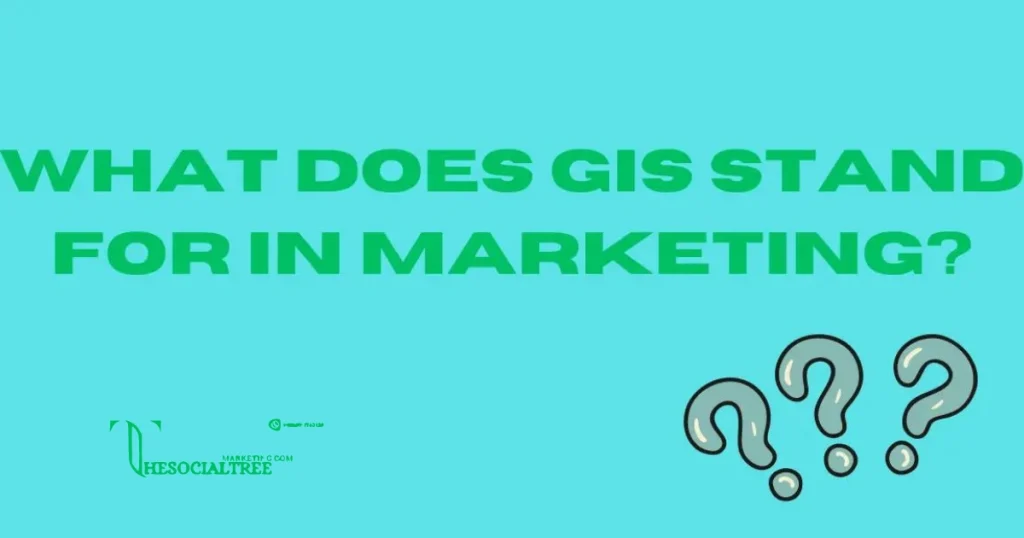
What is GIS? Suppose a regular map but with extra info on it. Instead of just showing streets and buildings, GIS gives data like where customers live, what they buy, and where other businesses are.
For marketers, it is like having a magic map that shows where their customers are, what they like, and where their competitors are cheering. It helps businesses make wise choices about where to focus their efforts. For example, GIS can help them understand which neighborhoods are potential customers when a company wants to open a new store. That way, they can choose a spot where people will notice their new store.
What is the Purpose and Function of GIS in Marketing?
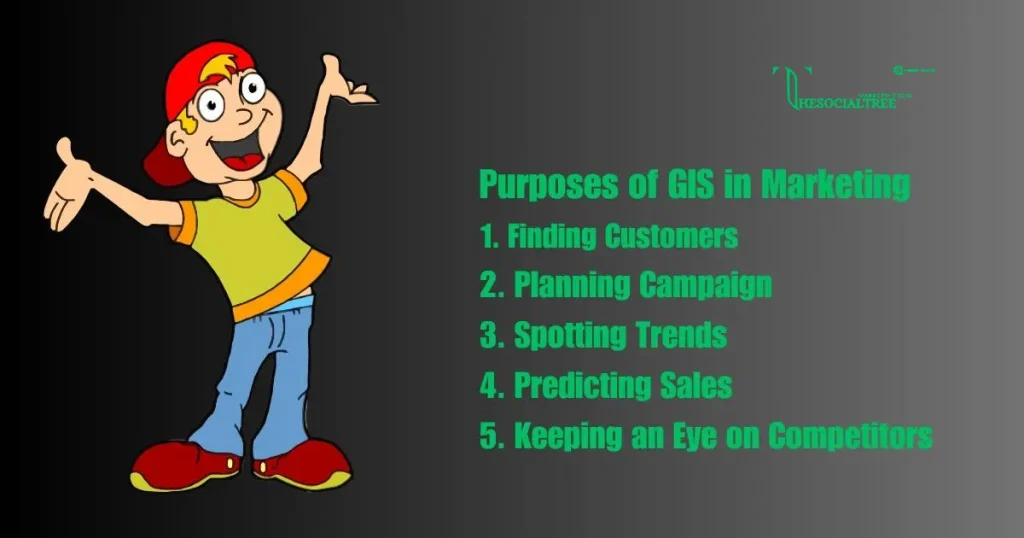
Now that you know what GIS is. Let us know how it helps with marketing and why GIS in digital marketing is so skilled and clever.
Finding the Right Customers
Firstly, GIS helps businesses find their perfect customers. Suppose a coffee shop wants to draw in more young professionals. With GIS, they can see which neighborhoods have the most young professionals living there.
Moreover, instead of wasting ads on areas where their target audience does not spend time together, they can focus their marketing efforts on reaching the right people.
Choosing the Best Spot for New Stores
Secondly, GIS is skilled and clever in choosing the best spot for a new store. If a business is searching for a new location, GIS can leave where there is a lot of foot traffic, where their competitors are, and what the local crowd looks like. It helps them pick a spot that drives customers and avoid places that have similar stores.
Making Customers Happier
GIS is not just about finding new customers; it is about keeping the ones you have happy. For example, a restaurant might add more spicy dishes when they use GIS and see that a particular area loves spicy food. This way, they are catering to what locals enjoy. And ensuring customers feel understood and satisfied.
Planning Smarter Marketing Campaigns
GIS is a ground-breaker when it comes to planning marketing campaigns. It helps businesses target their ads more precisely. Let us say a travel agency wants to expose summer vacation packages. GIS can help them know which areas have people who dream of a cheerful entry. This way, their ads will be more relevant and likely to get attention.
Spotting Trends
GIS is also helpful for detecting trends. Businesses can see where things are changing and find new opportunities by looking at data on a map. For example, restaurants might start offering stuff aimed at families if they see where they get more young families.
Predicting Sales
When it comes to predicting sales, GIS can be helpful. It looks at past sales data and geographical information to make wise choices about future sales. For example, a clothing store might use GIS to see how sales differ in various areas.
It helps them to understand which locations will likely be most profitable and manage their inventory accordingly.
Keeping an Eye on Competitors
Lastly, GIS is good for keeping an eye on competitors. It helps businesses know where their competitors are and how they are doing.
If a new bakery opens near an existing one, GIS can help the new bakery see what the existing bakers are doing well and where they find a way to stand out. It helps them attract more customers and make a difference.
Conclusion
So, there you have GIS. It is like having a clever map that helps businesses decide where to market, where to open new stores, and how to understand their customers.
It gives them a view of what is happening and helps them create strategies that really work. Besides, GIS helps get it right.

